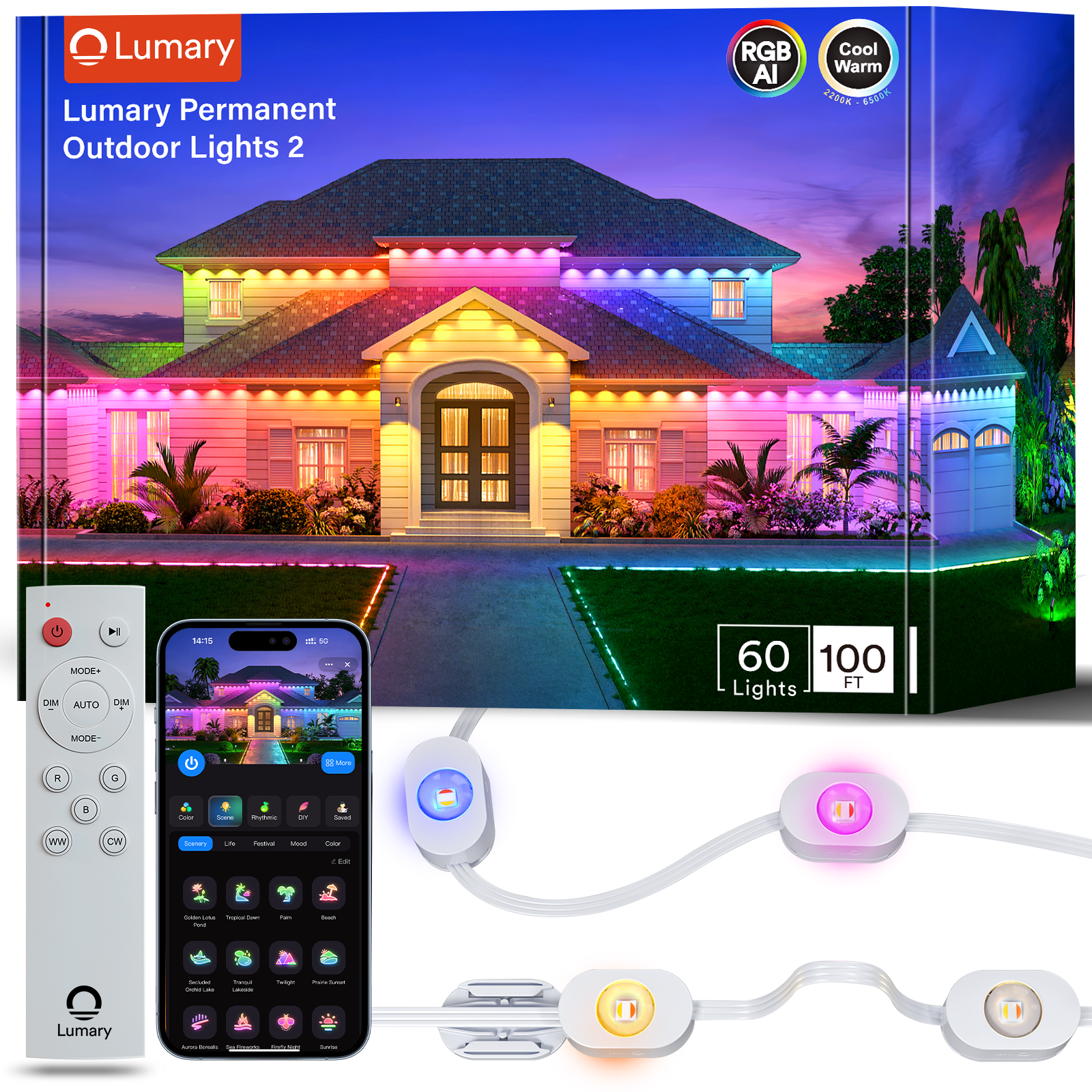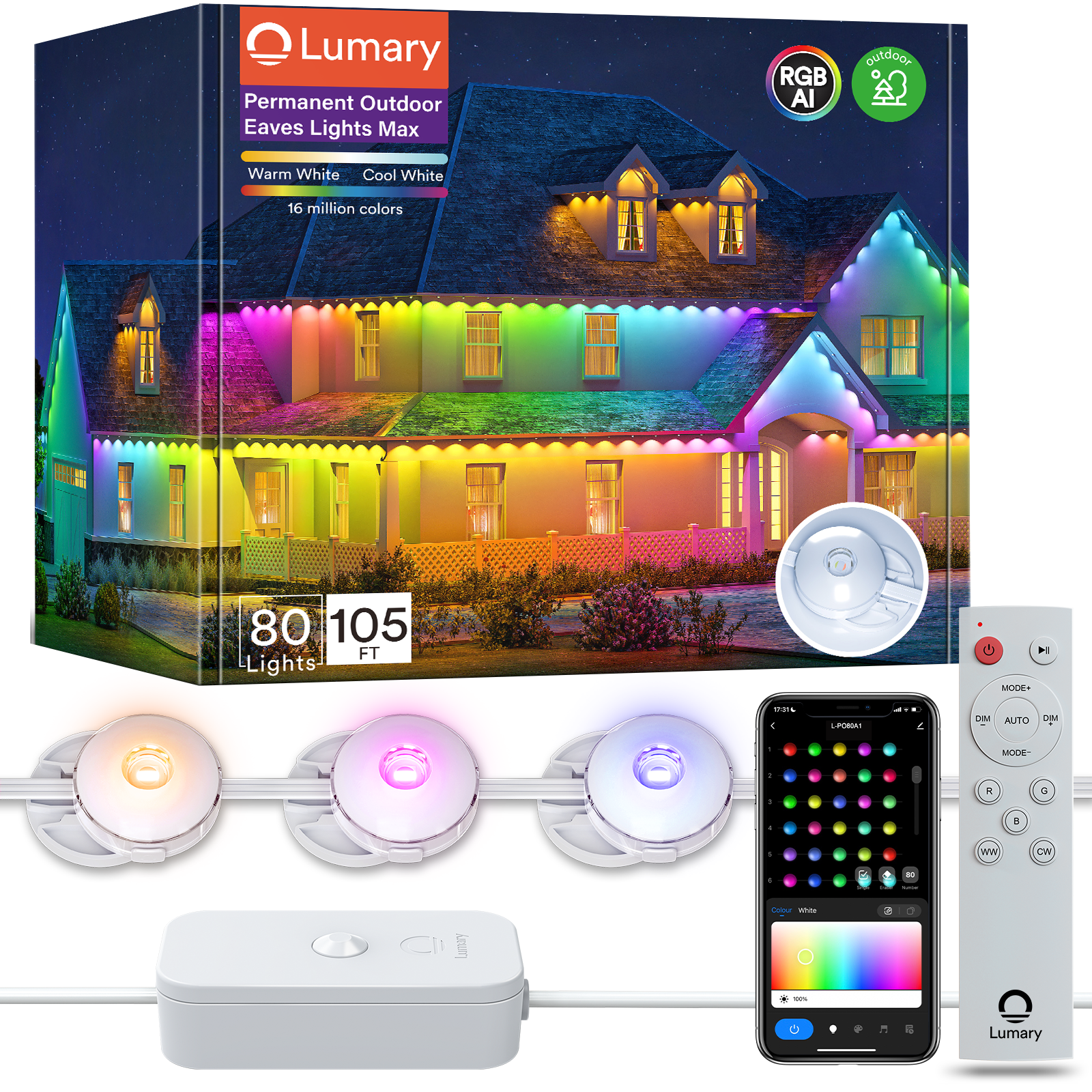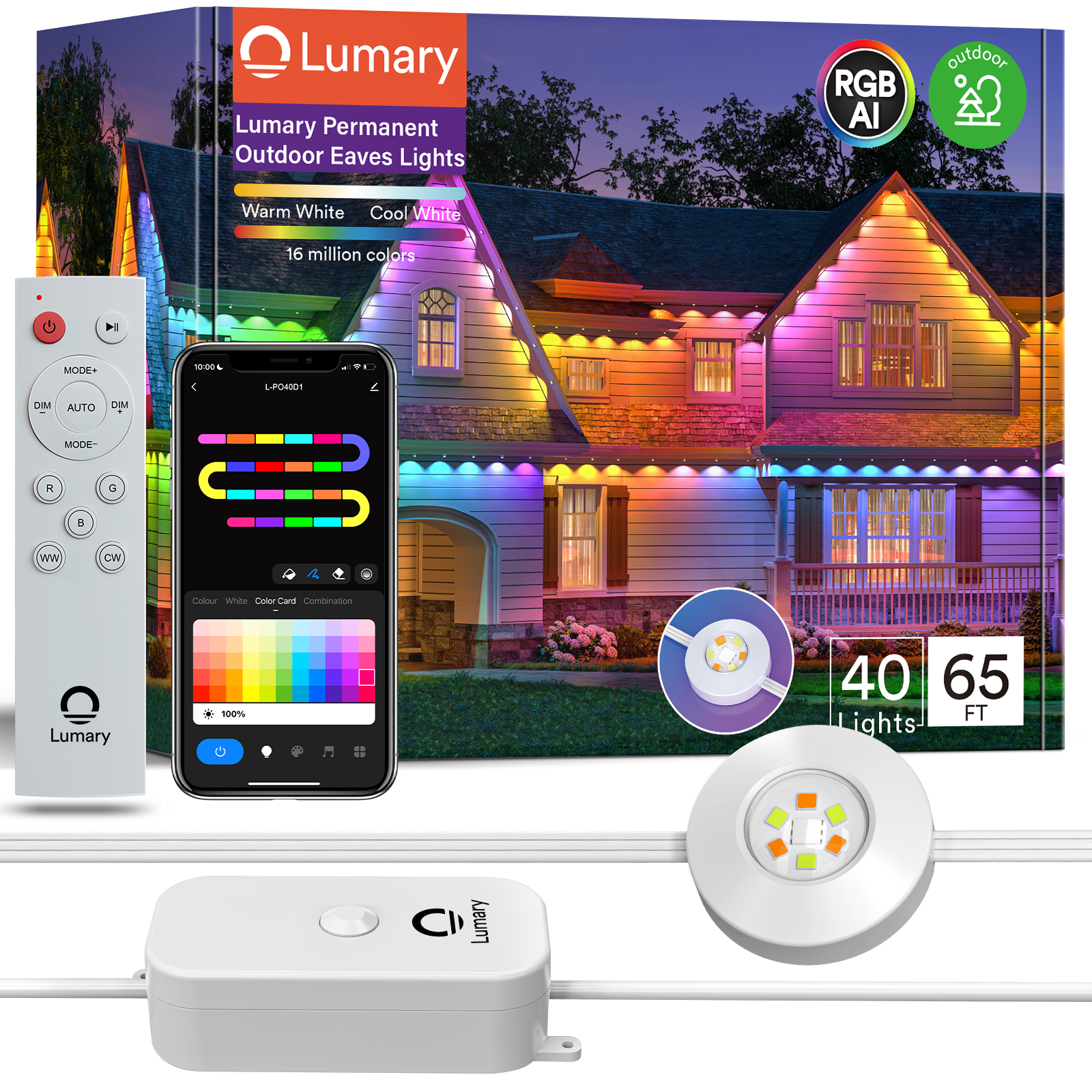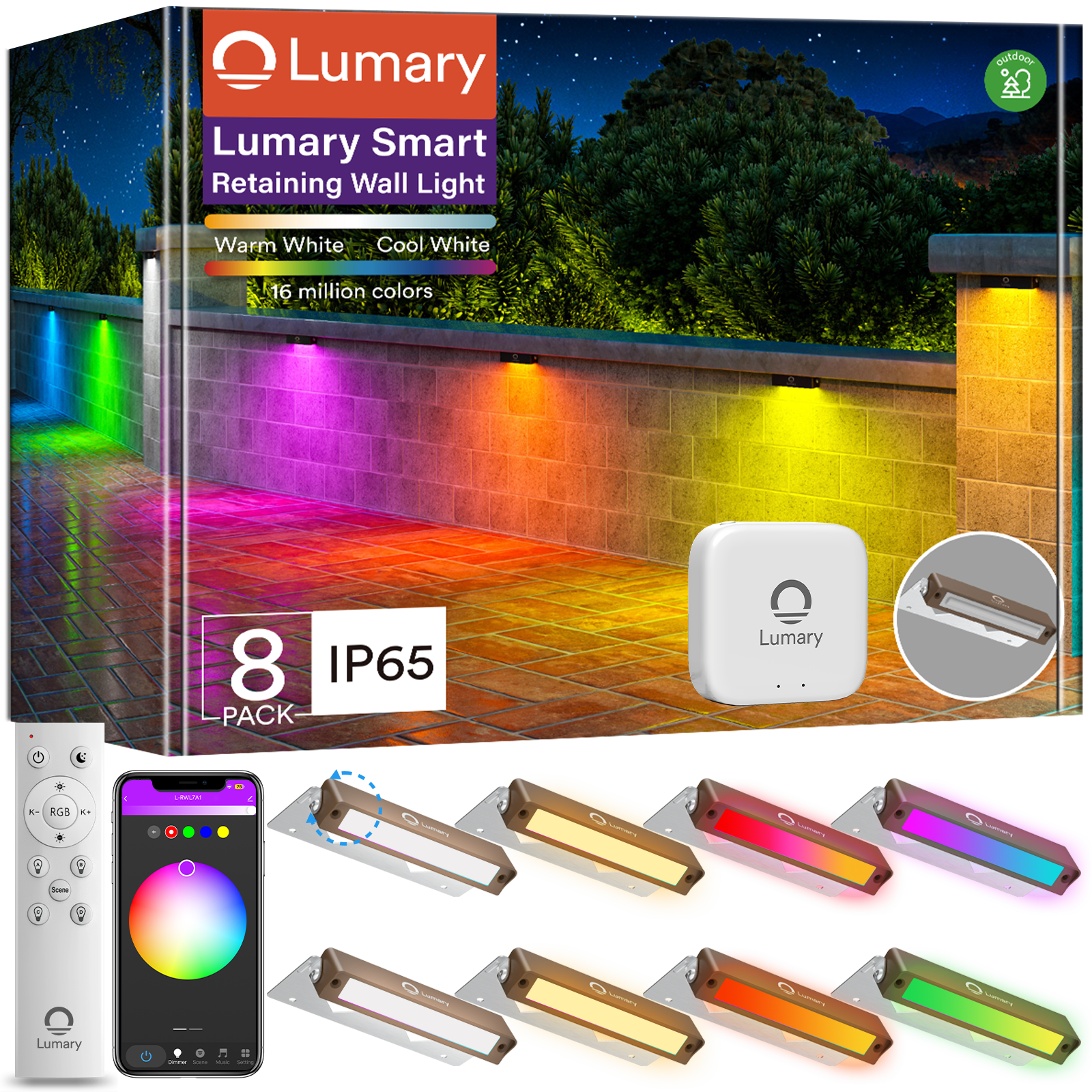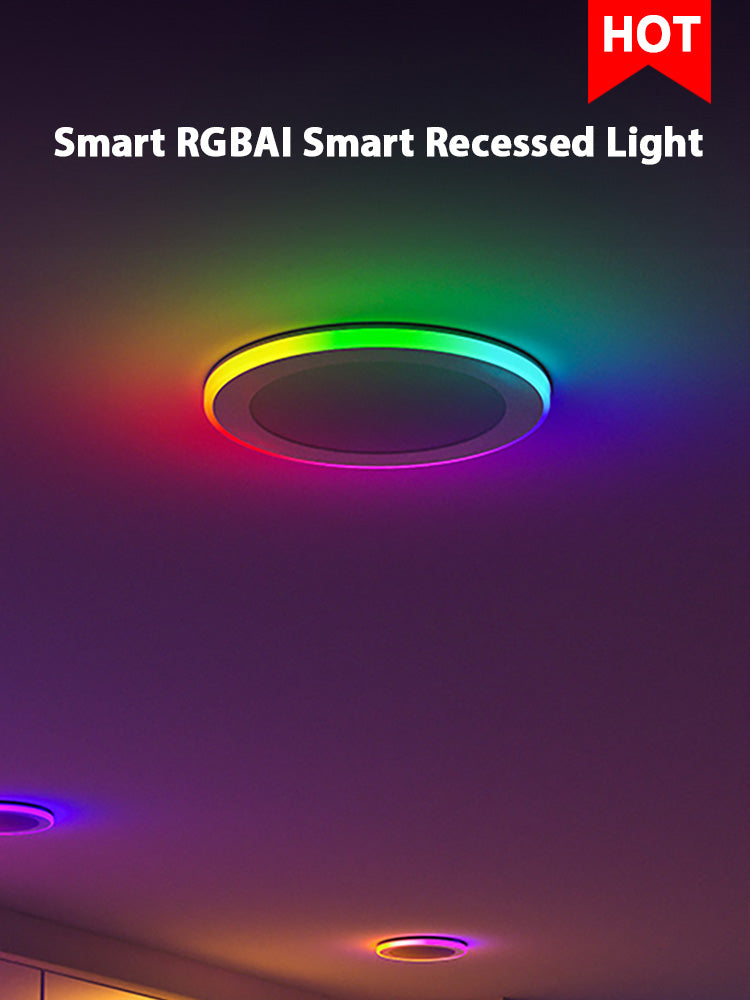Choosing the right LED exterior strip lights can completely transform your outdoor space. Whether you're hosting a backyard party or enjoying a quiet evening, the right lighting creates the perfect ambiance. It’s not just about aesthetics, though. Outdoor LED strip lights also improve safety by brightening pathways, stairs, and other areas, helping you avoid trips and falls at night. Plus, they’re energy-efficient, so you can enjoy beautiful lighting without worrying about high electricity bills. With so many options available, finding the perfect lights for your needs can make all the difference.

Key Takeaways
-
Think about your lighting needs before picking LED strip lights. Decide if you want them for looks or for use outdoors.
-
Think about the mood you want to set. Pick warm light for a comfy vibe or cool light for safety and work.
-
Choose the right brightness for your purpose. Use bright lights for paths and dimmer ones for decoration.
-
Make sure your LED strips can handle weather. Check the IP rating to see if they suit your area's weather.
-
Buy good-quality LED lights. They cost more now but save money on energy and replacements later.
Assess the Purpose of Outdoor LED Strip Lights
Define Your Lighting Goals
When choosing outdoor LED strips, the first step is to figure out what you want to achieve. Are you looking to add a decorative touch or improve functionality? Knowing your goals will help you make the right choice.
Decorative vs. Functional Lighting
Outdoor LED strip lights can serve different purposes. If you want to create a visually appealing space, decorative lighting is the way to go. These lights can highlight your garden, patio, or even architectural features, making your outdoor area stand out. On the other hand, functional lighting focuses on practicality. It improves visibility, making pathways, stairs, and entry points safer. Functional lighting also enhances security by deterring intruders and illuminating dark areas. Think about what matters most to you—style, safety, or both.
Highlighting Specific Outdoor Features
Do you have a favorite spot in your yard? Maybe a fountain, a tree, or a cozy seating area? Outdoor LED strips are perfect for drawing attention to these features. Use them to outline shapes, add depth, or create a focal point. Highlighting specific areas can transform your outdoor space into something truly special.
Consider the Desired Ambiance
The ambiance of your outdoor space plays a big role in how it feels. The color temperature of outdoor LED light strips can make all the difference. Do you want a warm, inviting vibe or a cool, modern look? Let’s break it down.
Warm vs. Cool Light Tones
Warm light creates a cozy and welcoming atmosphere. It’s perfect for porches, gardens, and gathering spots. Cool light, on the other hand, is more practical. It’s great for illuminating pathways, driveways, or areas where safety is a priority. Think about the mood you want to set and choose accordingly.
Adjustable or Static Lighting Options
Adjustable lighting gives you more control over your space. You can dim the lights for a relaxed evening or brighten them for a lively party. Plus, adjustable options save energy and extend the lifespan of your lights. Here’s a quick comparison:
|
Advantage |
Description |
|---|---|
|
Energy Efficiency |
Adjustable lighting consumes less power than traditional bulbs, leading to lower energy bills. |
|
Cost Savings |
Using dimmers and sensors can significantly reduce energy consumption and extend bulb lifespan. |
|
Enhanced Ambiance |
Adjustable lighting can be tailored to create the perfect atmosphere for various occasions. |
|
Health Benefits |
Mimics natural daylight, aiding in regulating circadian rhythms and improving sleep quality. |
If you prefer simplicity, static lighting is a good option. It’s easy to install and maintain, offering consistent brightness and color.
Choose the Right Type of LED Exterior Strip Lights
RGB vs. Single-Color Lights
Versatility of RGB Lights
If you love experimenting with colors, RGB LED strip lights are a fantastic choice. These lights can mix red, green, and blue to create millions of shades, giving you endless possibilities for your outdoor lighting. Whether you want a vibrant party vibe or a calming ambiance, RGB lights let you adjust the colors to match your mood or occasion. They’re perfect for adding a dynamic touch to patios, gardens, or even pool areas. Plus, many RGB lights come with smart features, so you can control them with an app or voice commands for added convenience.
Simplicity of Single-Color Lights
Sometimes, simplicity is all you need. Single-color LED strip lights emit one consistent color, making them ideal for functional lighting. They’re great for illuminating pathways, stairs, or entryways where visibility is key. These lights are easy to install and maintain, offering a straightforward solution for outdoor spaces. If you prefer a clean and minimalist look, single-color lights are a reliable option that gets the job done without any fuss.
Brightness Levels and Lumens
Matching Brightness to Outdoor Spaces
Choosing the right brightness for your outdoor LED strips is crucial. Lumens measure how bright a light appears to the human eye, so understanding this helps you pick the perfect lighting for your space. For example, patios and decks usually need 30-50 lumens per foot for a cozy glow, while pathways or stairways require 50-100 lumens for better visibility. Security lighting, like for driveways or entryways, often needs 100-150 lumens to ensure safety.
|
Area |
Recommended Brightness (Lumens per foot) |
|---|---|
|
Ambient lighting (patios, decks) |
30 - 50 lumens |
|
Pathways or stairways |
50 - 100 lumens |
|
Security lighting (driveways, entryways) |
100 - 150 lumens |
Lumens for Visibility vs. Ambiance
The brightness you choose depends on your goals. For functional lighting, go for higher lumens to ensure clear visibility. For decorative purposes, lower lumens create a softer, more inviting glow. If you want flexibility, dimmable LED strips are a great option. They let you adjust the brightness to suit any occasion, whether it’s a lively gathering or a quiet evening outdoors.
Tip: Path lights typically need 100-200 lumens, while floodlights may require 700-1300 lumens. Keep this in mind when planning your outdoor lighting setup.
Evaluate the Installation Location for Outdoor LED Strip Lights
Key Areas for Installation
Where you place your outdoor LED strips can make or break the overall look and functionality of your space. Let’s explore some popular spots to consider.
Walls, Railings, or Ground-Level Placement
Outdoor LED strip lights are incredibly versatile, so you can install them in various locations. Mounting them along walls or railings adds a sleek, modern touch to your outdoor area. They’re perfect for outlining balconies, porches, or even fences, creating a soft glow that enhances the ambiance. If you’re looking to improve safety, ground-level placement is a great option. Use them to illuminate pathways, driveways, or steps, ensuring clear visibility at night. These placements not only look great but also make your outdoor space safer for everyone.
Proximity to Power Sources
Before you install LED strip lights outdoor, think about how close they’ll be to a power source. Most outdoor LED strips require a nearby outlet or a compatible power supply. If the installation area is far from an outlet, you might need an extension cord or a waterproof connector. Planning this step ahead of time saves you from unnecessary hassle later. For a cleaner look, try to hide the cords or run them along edges where they’re less noticeable.
Surface Compatibility
The type of surface where you’ll install your lights matters too. Different surfaces require different mounting methods, so let’s break it down.
Smooth vs. Textured Surfaces
Smooth surfaces, like metal or glass, make installation a breeze. Adhesive backing on LED strips sticks well to these surfaces, ensuring a secure hold. Textured surfaces, like brick or rough wood, can be trickier. In these cases, you might need additional support, like mounting clips, to keep the lights in place. Always clean the surface before installation to ensure the adhesive or clips stick properly.
Adhesive vs. Mounting Clips
Adhesive backing is a quick and easy way to install outdoor LED strip lights. It works best on smooth, clean surfaces and is ideal for temporary setups. For a more permanent solution, mounting clips are your best bet. They provide extra stability, especially on uneven or textured surfaces. Clips are also great for areas exposed to harsh weather, as they keep the lights securely in place.
Tip: If you’re installing lights in a high-traffic area, consider using mounting clips for added durability. This ensures your lights stay put, even with frequent use or exposure to the elements.
Consider Material and Durability of High-Quality Outdoor LED Light Strips
When choosing outdoor LED strips, you want them to last through all kinds of weather while maintaining their performance. The material and durability of the strips play a huge role in ensuring they can handle outdoor conditions without wearing out quickly.
Flexible and Durable Materials
Silicone vs. PVC Coatings
The coating on your LED strips determines how well they perform outdoors. Silicone is one of the best materials for outdoor LED strips. It’s incredibly flexible and can handle extreme temperatures, from freezing cold to scorching heat (-76°F to 390°F). Silicone is also eco-friendly and non-toxic, making it a safe and durable option for outdoor use. Plus, it doesn’t crack or become brittle when exposed to sunlight, so your lights will look great for years.

PVC, on the other hand, is a more budget-friendly choice. It resists moisture well and works for both indoor and outdoor applications. However, it’s less flexible than silicone and may crack if bent too much. PVC is also better suited for cost-sensitive projects where flexibility isn’t a priority.
Here’s a quick comparison to help you decide:
|
Feature |
Silicone Coating |
PVC Coating |
|---|---|---|
|
Moisture Resistance |
Excellent moisture resistance and flexibility |
Resists moisture well for indoor and outdoor use |
|
Temperature Range |
-76°F to 390°F |
-13°F to 140°F |
|
Flexibility |
Highly flexible, ideal for bending |
Less flexible, can crack if overly bent |
|
Cost |
More expensive |
Low cost and widely available |
|
UV Resistance |
Can yellow over time with UV exposure |
UV-resistant for outdoor use |
|
Abrasion Resistance |
Less abrasion-resistant, prone to tearing |
Harder and more rigid for abrasion resistance |
|
Ideal Use Case |
Outdoor landscape lighting |
Cost-sensitive applications |
Resistance to Wear and Tear
Outdoor LED strips face constant exposure to the elements. Silicone-coated strips excel here because they resist wear and tear, even in harsh environments. They’re waterproof and can handle heavy rain or snow without losing their shine. PVC-coated strips are more rigid, which makes them better at resisting scratches or abrasions. If your lights will be in high-traffic areas, PVC might be a better fit.
Compatibility with Outdoor Surfaces
Non-Corrosive Materials for Metal Surfaces
If you’re installing LED strips on metal surfaces, look for non-corrosive materials. Silicone is a great choice because it doesn’t react with metal, ensuring your lights stay securely attached without damaging the surface. This makes it perfect for railings, fences, or other metallic structures in your outdoor space.
Adhesion to Wood, Concrete, or Plastic
For wood, concrete, or plastic surfaces, you need a material that sticks well. Silicone-coated strips work wonderfully here because of their flexibility and strong adhesive backing. They mold easily to uneven surfaces, making installation a breeze. PVC strips can also adhere to these surfaces, but they might require additional mounting clips for extra stability, especially on rough textures like concrete.
Tip: Always clean the surface before installing your LED strips. This ensures the adhesive sticks properly and keeps your lights in place for the long haul.
Calculate the Required Length of LED Exterior Strip Lights
Measure the Installation Area
Tips for Accurate Measurements
Getting the right length for your LED strip lights starts with accurate measurements. Follow these steps to ensure you don’t end up with lights that are too short or too long:
-
Decide where you want to install the lights. Think about areas like patios, pathways, or railings.
-
Use a measuring tape to determine the length of the area.
-
Compare your measurements to the length of the LED strip you plan to use.
-
Measure twice to avoid mistakes.
-
Mark any differences if the strip doesn’t match the area perfectly.
Pro Tip: Some LED strips can be trimmed to fit your space. If trimming isn’t an option, consider adjusting the installation location.
Allowing Extra Length for Adjustments
Always leave a little extra length when measuring. This gives you flexibility during installation. For example, if you’re wrapping lights around corners or curves, you’ll need more length than a straight line measurement. It’s better to have a bit more than to fall short. Plus, extra length can help if you decide to reposition the lights later.
Extending Strips
Using Connectors for Extensions
If your LED strip isn’t long enough, connectors can save the day. These handy tools let you extend your lights without compromising their functionality. Here’s a quick look at the types of connectors and their benefits:
|
Connector Type |
Benefits |
|---|---|
|
T-Connectors |
Perfect for splitting LED strips into two paths, ideal for directional lighting. |
|
4-Way Connectors |
Great for creating versatile layouts like grids or crosses. |
|
Push-to-Connect |
Easy to use and tool-free, though they may loosen over time. |
|
Screw Terminal |
Provides a stable connection, especially for heavy-duty or outdoor applications. |
Choose the connector that fits your project’s needs. For outdoor setups, screw terminals offer extra durability.
Note: Always clean the installation area before attaching the strips. Use a cloth and cleaning solution to remove dirt or grease. This ensures the adhesive sticks properly.
Check Weatherproof and Durability Features
When choosing outdoor LED strip lights, you need to ensure they can handle the elements. From rain to sunlight, your lights should stay functional and look great. Let’s dive into the key features that make them durable and weatherproof.
IP Ratings for Outdoor LED Strip Lights
Understanding IP Ratings (e.g., IP65, IP67)
IP ratings are a standard way to measure how well a product resists dust and moisture. The first digit in the rating shows protection against dust, while the second digit indicates water resistance. For example:
-
IP65: Protects against dust and water splashes, making it ideal for patios or gardens.
-
IP67: Handles heavy rain and temporary submersion in water.
-
IP68: Offers the highest protection, suitable for extreme conditions like underwater installations.
Here’s a quick comparison to help you decide:
|
IP Rating |
Suitable For |
Water Resistance |
Dust Resistance |
|---|---|---|---|
|
IP65 |
Basic outdoor use (patios, gardens) |
Resistant to rain and splashes |
Protected against dust |
|
IP67 |
Heavy rain or sprinklers |
Immune to temporary submersion |
Full protection from dust |
|
IP68 |
Extreme outdoor conditions |
Fully waterproof, withstands submersion |
Complete dust protection |
Choosing the Right Rating for Your Climate
Your local weather plays a big role in selecting the right IP rating. If you live in a rainy area, go for IP67-rated lights. For coastal or humid regions, IP68 is your best bet. These ratings ensure your lights stay waterproof and functional, no matter the conditions.
Tip: Always check the IP rating before buying a waterproof outdoor light strip. It’s the easiest way to ensure durability.
UV and Water Resistance
Protection Against Sunlight Damage
Sunlight can damage outdoor LED strips over time, causing them to yellow or crack. High-quality lights use eco-friendly silicone material to resist UV rays. This keeps the lights flexible and clear, even after years of exposure. Silicone also prevents aging and brittleness, so your lights stay as good as new.
Waterproofing for Rainy or Humid Conditions
Waterproofing is essential for outdoor lighting. Many LED strips use advanced technologies like RTV silicone sealants or epoxy coatings to block water. These materials protect connections and prevent water from seeping in. For example:
-
IP67: Withstands temporary submersion in water up to 1 meter.
-
IP68: Handles continuous submersion beyond 1 meter.
Here’s a breakdown of common waterproofing technologies:
|
IP Rating |
Description |
|---|---|
|
IP67 |
Protected against dust and immersion in water up to 1 meter for 30 minutes. |
|
IP68 |
Fully dustproof and can handle continuous immersion in water beyond 1 meter. |
Note: For areas with heavy rain or high humidity, choose lights with IP67 or higher. This ensures they remain waterproof and durable.
By focusing on these features, you’ll get outdoor LED strip lights that last through any weather.
Review Energy Efficiency and Voltage Requirements
When it comes to outdoor LED strip lights, energy efficiency and voltage compatibility are two factors you can’t ignore. They not only impact your electricity bill but also determine how well your lights perform. Let’s break it down.
Energy-Saving Features
Benefits of Low-Power LED Strips
Low-power LED strips are a win-win for your wallet and the environment. They consume less electricity while still providing excellent brightness. This means you can light up your outdoor spaces without worrying about skyrocketing energy costs. Plus, they generate less heat, which extends their lifespan. So, you’re saving money on replacements too!
Comparing Wattage and Efficiency
Not all lights are created equal when it comes to efficiency. LEDs are known for their superior performance compared to traditional lighting options. Here’s a quick comparison to show you how wattage impacts efficiency:
|
Light Type |
Watts Used |
Lumens Produced |
Efficiency (lumens/watt) |
|---|---|---|---|
|
Incandescent |
60W |
800 lm |
13 lm/W |
|
Halogen |
55W |
800 lm |
14.5 lm/W |
|
CFL |
15W |
800 lm |
53.3 lm/W |
|
LED |
16W |
800 lm |
50 lm/W |
As you can see, LEDs use far less power to produce the same brightness as incandescent or halogen bulbs. This makes them the best choice for energy-efficient outdoor lighting.
Voltage Compatibility
12V vs. 24V LED Strips
Choosing between 12V and 24V LED strips depends on your setup. Here’s what you need to know:
-
24V LED strips are perfect for longer installations. They handle more LEDs in a single run, reducing energy loss as heat.
-
They’re also more efficient and require thinner wiring, which simplifies installation.
-
On the other hand, 12V LED strips work well with most existing electrical systems, like those in cars or boats.
If you’re planning an extensive outdoor lighting project, 24V strips are the way to go. But for smaller setups, 12V strips are a reliable option.
Avoiding Overloading or Underpowering
To keep your LED strips running smoothly, follow these precautions:
-
Make sure the total load doesn’t exceed 80% of your power supply’s capacity.
-
Avoid going below 30% of the transformer’s capacity to ensure proper operation.
Also, always use the recommended power supply. Overloading can cause overheating, while underpowering may lead to flickering or dim lights. Both can shorten the lifespan of your outdoor LED strips.
By focusing on energy efficiency and voltage compatibility, you’ll get the most out of your outdoor lighting while keeping costs low and performance high.
Explore Reliable Options to Choose Outdoor LED Strip Lights
Trusted Brands and Retailers
Importance of Warranties and Customer Support
When you’re buying outdoor LED strip lights, warranties and customer support are two things you shouldn’t overlook. A solid warranty protects your investment by covering any defects or issues that might pop up during the warranty period. This means you won’t have to spend extra money on repairs or replacements. Plus, it gives you peace of mind knowing the product will perform as promised.
Customer support is just as important. Whether you need help with installation or troubleshooting, having access to reliable after-sales service can make a huge difference. It ensures your lights work properly and last longer. So, always check if the brand offers good customer support before making a purchase.
Reading Reviews and Testimonials
Want to know if a product is worth it? Read reviews and testimonials from other buyers. These can give you real insights into the quality and performance of the lights. Look for reviews that mention durability, brightness, and ease of installation. If a product has consistently positive feedback, it’s a good sign you’re making the right choice.
Tip: Pay attention to reviews that mention customer service. A brand with great support is more likely to help you if something goes wrong.
Balancing Cost and Quality
Avoiding Cheap, Low-Quality Products
It’s tempting to go for the cheapest option, but low-cost products often compromise on quality. Cheap LED strip lights might not last long or perform well, especially in outdoor conditions. Instead, focus on finding lights that offer good value for money. High-quality lights may cost more upfront, but they’ll save you money in the long run by lasting longer and requiring fewer replacements.
Comparing Features and Prices
When you’re deciding which lights to buy, compare their features and prices. Here are a few things to consider:
-
Brightness levels: High-brightness LEDs are pricier but essential for areas needing strong illumination. Standard brightness works well for ambient lighting.
-
Weatherproofing: Make sure the lights can handle outdoor conditions like rain or sunlight.
-
Length and color temperature: Choose lights that fit your space and match the ambiance you want.
-
Energy efficiency: Look for lights that save power without compromising performance.
By weighing these factors, you can find the perfect balance between cost and quality. This ensures you get durable, functional lights that enhance your outdoor space without breaking the bank.
Pro Tip: Stick to trusted brands when you choose outdoor LED strip lights. They’re more likely to offer high-quality products with reliable warranties.
Choosing the best outdoor LED strip lights doesn’t have to be overwhelming. Let’s recap the key points:
-
Understand IP ratings to ensure weather resistance.
-
Pick the right brightness for visibility or ambiance.
-
Match color tones to your desired mood.
-
Choose between 12V and 24V strips based on your setup.
-
Measure your space accurately for a perfect fit.
-
Ensure your power supply matches the strip’s requirements.
-
Add controllers for customization.
Investing in high-quality LED exterior strip lights, like Lumary Smart Outdoor Neon Rope Lights, offers long-term benefits. These lights combine durability, energy efficiency, and advanced features like app control and music sync. With their IP65 waterproof rating and flexible design, they’re perfect for transforming your outdoor space into something extraordinary.
Tip: High-quality LEDs last up to 50,000 hours, saving you money on replacements and energy bills.
FAQ
1. Can outdoor LED strip lights be left on all night?
Yes, you can leave them on all night. LED lights are energy-efficient and produce minimal heat, making them safe for extended use. However, using a timer or smart controls can help save energy and extend their lifespan.
2. How do I clean outdoor LED strip lights?
Use a soft, damp cloth to wipe the surface gently. Avoid harsh chemicals or abrasive materials that could damage the coating. For stubborn dirt, mix mild soap with water and clean carefully. Always ensure the lights are off before cleaning.
3. Are outdoor LED strip lights safe in extreme weather?
High-quality outdoor LED strips, like those with IP65 or higher ratings, handle extreme weather well. They resist water, dust, and UV rays. For areas with heavy rain or snow, choose IP67 or IP68-rated lights for added durability.
4. Do outdoor LED strip lights attract bugs?
LED lights attract fewer bugs compared to traditional lights. Warm white or yellow-toned LEDs are less appealing to insects. If bugs are a concern, choose lights with these tones to keep your outdoor space comfortable.


